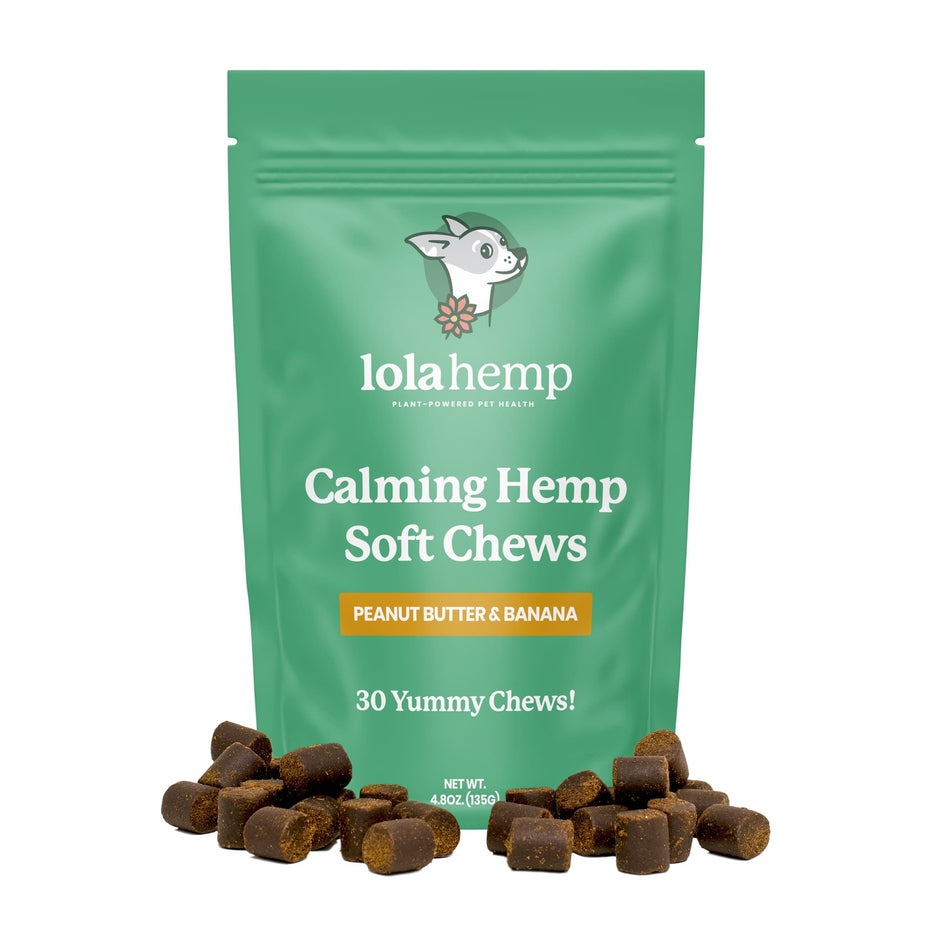Separation anxiety in dogs can be heartbreaking for owners and dogs alike. With some patience, consistency, and the right techniques, most cases can be managed and improved over time. Treating separation anxiety in dogs is best approached from a training and biological perspective.
 Dog owners say their pets experience more relaxed periods of separation when using this oil.
Dog owners say their pets experience more relaxed periods of separation when using this oil.
In other words, it’s best to examine the research and find established training methods rather than trying things out that you’re not sure will work. For example, leaving the television on might be entertaining for some dogs, but there’s little research to suggest that it’s a viable solution for separation anxiety.
5 Tips for Treating Separation Anxiety in Dogs
1. Avoid Punishing Your Dog for Anxious Behaviors
You may be tempted to punish your dog when you return home to a scene of destruction. However, research is clear on this subject: punishment makes this problem worse!
Separation anxiety stems from insecurity. That is, your dog does not feel safe and confident when you are away. Punishment makes dogs feel even more insecure. Your dog learns to be even more afraid of being alone if you punish them, and your punishment won’t be effective as your dog won’t know what it’s associated with.

The odds are that your dog made the mess hours before you punished them for it. On the other hand, dogs trained with positive, reward-based methods are more confident.
Consider enrolling in positive reinforcement-based training classes at your local pet store or animal shelter to learn a host of training techniques for this and other behavioral problems.
2. Try Counter-Conditioning Methods
Counter-conditioning is a training technique used to reprogram an anxiety-producing trigger and give it a new association.
For example, let’s say your pooch assumes you are leaving every time you put your shoes on. He has probably noticed that this action is a good predictor that you are about to leave the house. As a result, he gets very anxious.
What if you gave your dog something he loves almost every time you put your shoes on?
Shoes on – Game of tug!
Shoes on – Toss the ball!
Shoes on – Bonus piece of kibble!
What if every time you left the house your dog got a hollow dog toy filled with peanut butter to keep him busy for a good 20 minutes? Um, yes please!

Instead of associating leaving with loneliness, your dog can associate this trigger with new and positive experiences!
Make a note of all the triggers that your dog has learned to associate with you leaving which cause them to display anxious behaviors. These are precisely the triggers you should reprogram with a more positive association.
You May Also be Interested in:
- How to Calm Down a Hyper Dog - Helpful strategies for calming your hyper dog during stressful times.
- What to Do if Your Dog Eats Weed - Steps to take if your dog ingests cannabis products.
- Passionflower for Dog Calming - Discover how passionflower can help calm anxious dogs.
- Calming CBD Oil for Dogs - Learn about the calming benefits of CBD oil for dogs.
- Signs of Stress in Dogs - Key signs to look for to identify stress in your dog.
3. Reward Mini Separations
Although it may sound counterintuitive, one of the ways you can actively teach your dog to gain more confidence with being alone is a training program that encourages her to practice being alone under very controlled circumstances, rewarding her for calm behavior in your absence.
One way to do this is to first train a solid Down/Stay, using reward-based training methods. Start rewarding with a piece of kibble at 2 seconds of a Down/Stay, and slowly increase the time before reward over several training sessions. Just ignore failure and reward success.
Once you have a solid Down/Stay on command and your dog will reliably give it to you for 2 minutes, start doing this trick on the other side of the door in a room by herself. Of course, you will start back at just a few seconds of a solid Down/Stay (without whining) before rewarding.

So, you establish the Down/Stay command, command the dog to stay behind a closed door for two or three minutes, then return.
Over time you can increase the duration of your mini-separations, turning this into a game where she is rewarded liberally for staying quiet in her room for up to 20 minutes, which you will practice a few times a day.
4. Crate Training
Crate training is sometimes recommended for dogs that suffer from separation anxiety for two reasons. First, teaching a dog to feel safe and secure in her crate can eliminate the sense of unease that comes from having the run of the house when her family is gone.
Second, destructive canines have been known to chew through drywall and be electrocuted by exposed wires, or choke on pieces of destroyed toys or furniture. A well-built crate can give you the peace of mind that your dog is safe when you are gone.
Crate training is more involved than simply putting your dog in the kennel and shutting the door! In fact, if done poorly, crate training can even exacerbate separation anxiety issues! Be sure to do some research on how to train your dog to love the crate long before you leave her alone in it.

5. CBD Oil for Your Dog’s Separation Anxiety
In addition to training techniques, you may also consider medications for your dog's anxiety. While there are pharmaceutical tranquilizers available through your veterinarian, these drugs can cause unwanted side effects such as drowsiness and damage to your canine's liver and kidneys if used excessively.
Instead, it might be time to try a safe and effective natural supplement that may promote calm and relaxation in some dogs: CBD Oil.

If you’re looking to try pet CBD oil for your furry friend, there are a few things to note. For one, CBD oil for dogs is a new market, and there’s a lot of evidence to suggest that it’s effective in helping some dogs ease their pain and anxiety. It isn’t a cure-all, however, and it might not work for all dogs.
CBD works on the endocannabinoid system, which humans and dogs share. This system manages the central nervous system, and full-spectrum CBD reliably calms the central nervous system through the endocannabinoid system. The benefits of CBD are not fully understood, but there’s a lot of anecdotal evidence to suggest that it’s effective for a lot of pets and owners.
Finally, it’s very important to note that CBD for humans is different from CBD for pets. These products are crafted in ways to address the specific bodies of patients, so it’s important that you don’t give your dog any CBD products that are labeled for human consumption. Make sure your product is tested, verified, and certified with care.
If you are looking for the best, be sure to give Lolahemp a try. We source our oils and chews from certified organic hemp and we display our third-party batch testing right on our website – you don’t have to guess if you are giving your dog the best!
Know When to Contact an Expert
If you want to learn more about treating separation anxiety in your dog, we here at Lolahemp recommend this book by Patricia McConnell. Her methods are based in the science of animal behaviorism and focus on positive, reward-based strategies.
It is also important to recognize if you are not making progress within a few weeks or if the problem is severe enough to require immediate help from a professional animal trainer (such as if your dog is a danger to herself when left alone).
In some severe cases of separation anxiety in dogs, your best bet is to get a pro on the case as soon as possible.
Related Articles
- What Can I Give My Dog for Car Anxiety - Discover helpful remedies for dogs that get anxious in the car.
- Why is My Dog Pacing - Explore the common causes of pacing behavior in dogs.
- How to Stop Your Dog from Barking at Other Dogs - Tips to manage your dog’s barking at other dogs.
- Can CBD Help Puppies Calm Down? - Learn if CBD can assist in calming hyperactive puppies.

